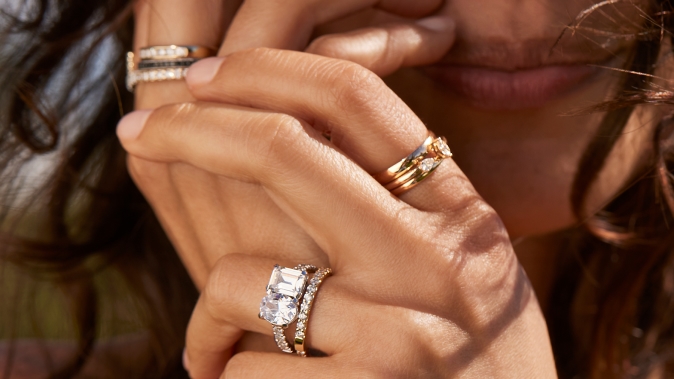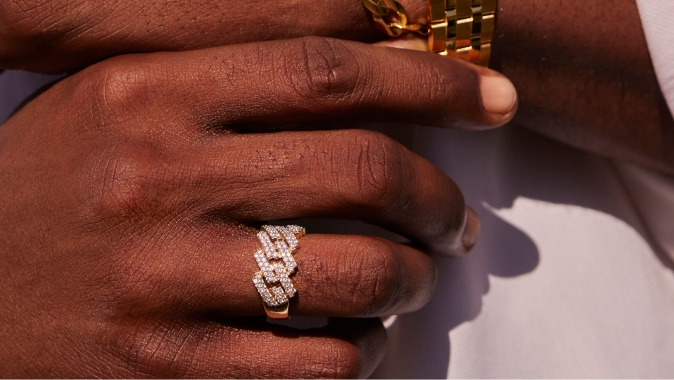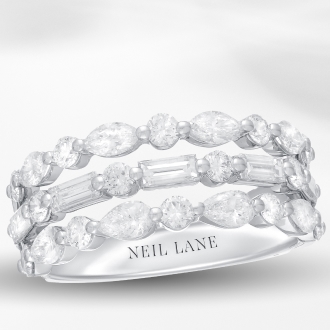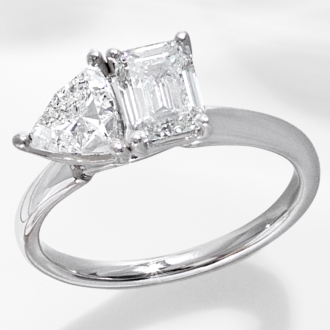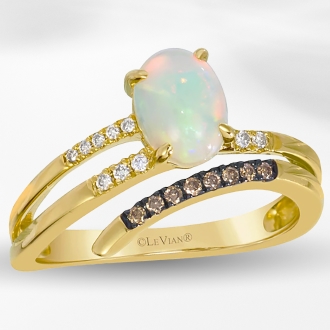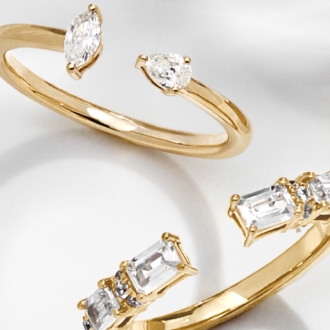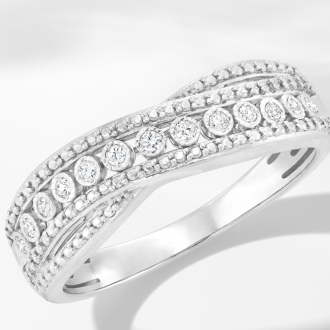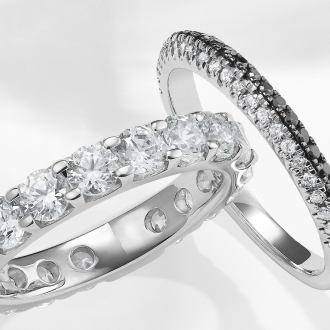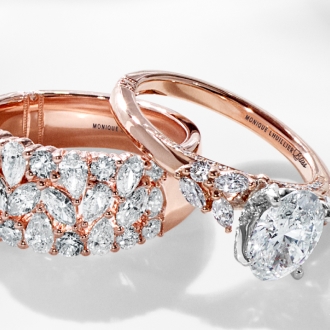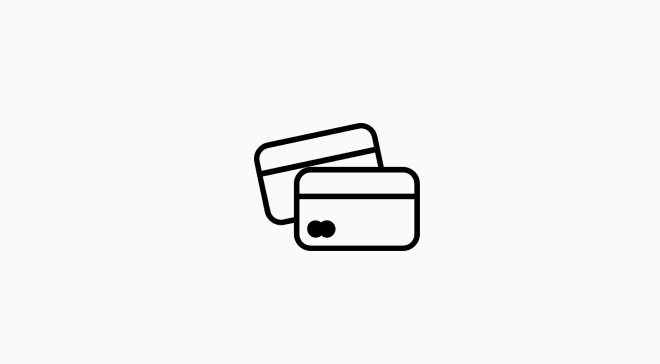Finding Your Ring Size: A Step-by-Step Guide
When it comes to buying rings, whether for an engagement, wedding, or just a personal piece of jewelry, finding the right ring size is crucial. A ring that is too tight can be uncomfortable, while a ring that is too loose can slip off and be easily lost. Fortunately, determining your proper ring size is relatively easy with a few simple methods. In this article, we will guide you through the process of finding your perfect ring size.
Why Proper Ring Size Matters
A properly sized ring not only ensures comfort but also enhances the overall look and feel of the jewelry. For rings that are meant to be worn every day, such as engagement rings or wedding bands, having the right fit is especially important. Additionally, a well-fitting ring will stay securely in place, whether you're typing, exercising, or doing other daily activities.
Step 1: Know Your Ring Size Measurement System
Ring sizes are measured using different systems depending on the country or region. The most common systems include:
- U.S. and Canada: Size is usually measured in numbers (e.g., 6, 7, 8) with half sizes available (e.g., 6.5, 7.5).
- UK and Australia: The size is usually measured in letters (e.g., K, M, O), with half sizes also available.
- Europe: Sizes are typically represented by a number in millimeters (e.g., 54, 56, 58), indicating the circumference of the ring in millimeters.
- Japan: Sizes are represented by numbers (e.g., 7, 9, 11), but these correspond to different measurements than U.S. sizes.
Knowing which system applies to your region is essential when selecting the correct ring size. Be sure to check with the jeweler or ring manufacturer if you are unsure.
Step 2: Measure Your Finger
There are a few methods you can use to measure your finger and determine your ring size. Here are the most common methods:
1. Using a Ring Sizer
One of the most accurate ways to determine your ring size is by using a ring sizer. These can be found online or at most jewelry stores. Ring sizers are typically small plastic or metal tools with various sizes marked on them. To use a ring sizer:
- Slide the ring sizer onto your finger and adjust it until it fits comfortably. Make sure the sizer slides over your knuckle without being too tight.
- Once you find the right fit, check the size marked on the sizer.
- Keep in mind that finger sizes can vary between your left and right hands, so measure the finger on the hand you intend to wear the ring.
2. Using a Printable Ring Size Chart
Use our printable ring size chart that will allow you to measure your finger size at home using a current ring that is comfortable on the desired finger. To use our printable ring size chart:
- Download and print the ring size chart on a standard 8.5" x 11" sheet of paper.
- Ensure the page is at 100% size. If the page is scaled incorrectly, it can affect the accuracy of your measurement.
- Slide current ring over each printed circle, stopping once the circle fits snugly inside the ring.
- Read the size indicated on the chart.
3. Using a String or Paper Strip
If you don’t have a ring sizer or printer, you can use a piece of string or paper to measure your finger. Here’s how:
- Cut a thin strip of string or paper about 4-6 inches long.
- Wrap the string or paper around the base of your finger, where you plan to wear the ring.
- Mark the point where the string or paper overlaps.
- Lay the string flat and measure the length with a ruler (in millimeters).
- Use a ring size conversion chart like the below to match your measurement to the corresponding ring size.
Ring Size | Diameter (Millimeters) | Diameter (Centimeters) |
|---|---|---|
3 | 14.0 MM | 1.40 CM |
3.5 | 14.4 MM | 1.44 CM |
4 | 14.8 MM | 1.48 CM |
4.5 | 15.2 MM | 1.52 CM |
5 | 15.6 MM | 1.56 CM |
5.5 | 16.0 MM | 1.60 CM |
6 | 16.45 MM | 1.645 CM |
6.5 | 16.9 MM | 1.69 CM |
7 | 17.3 MM | 1.73 CM |
7.5 | 17.7 MM | 1.77 CM |
8 | 18.2 MM | 1.82 CM |
8.5 | 18.6 MM | 1.86 CM |
9 | 19.0 MM | 1.90 CM |
9.5 | 19.4 MM | 1.94 CM |
10 | 19.8 MM | 1.98 CM |
10.5 | 20.2 MM | 2.02 CM |
11 | 20.6 MM | 2.06 CM |
11.5 | 21.0 MM | 2.10 CM |
12 | 21.4 MM | 2.14 CM |
12.5 | 21.8 MM | 2.18 CM |
13 | 22.2 MM | 2.22 CM |
13.5 | 22.6 MM | 2.26 CM |
Step 3: Consider Your Knuckle Size & Temperature
If your finger has a large knuckle, the ring should be able to comfortably slide over it, but also stay securely in place once it's on. If you have difficulty getting the ring past your knuckle, try measuring the finger just below the knuckle. Many people opt for a half-size or even a full-size larger ring if they have larger knuckles.
Your finger size can fluctuate depending on the time of day or the weather. Fingers tend to be smaller in the morning and larger in the evening due to temperature changes. To get the most accurate measurement:
- Measure your finger at the end of the day when your finger is at its largest.
- Avoid measuring when your hands are cold, as this can cause your fingers to shrink and give you an inaccurate reading.
Tips for Ring Size Accuracy
- Don't measure when your fingers are swollen (e.g., after exercise or in hot weather).
- Consider the width of the band: Wider rings tend to feel tighter, so you may need to go up a half or full size for comfort.
- If you're buying a ring as a gift: If you’re purchasing a ring as a surprise, you can try to borrow one of the recipient’s rings to get a rough idea of their size. Just be sure the ring is from the correct finger.
- Consider resizing: If you accidentally buy a ring that's slightly too big or too small, many jewelers offer resizing services to adjust the fit.
Tips for Ring Size Accuracy
Finding your correct ring size is an important step in purchasing a ring that will fit comfortably and securely. Whether you use a ring sizer, printable chart, or string method, just be sure to take accurate measurements and consider factors like knuckle size and temperature fluctuations. And if you’re ever in doubt, consulting a professional jeweler will ensure you get the perfect fit for your ring.
